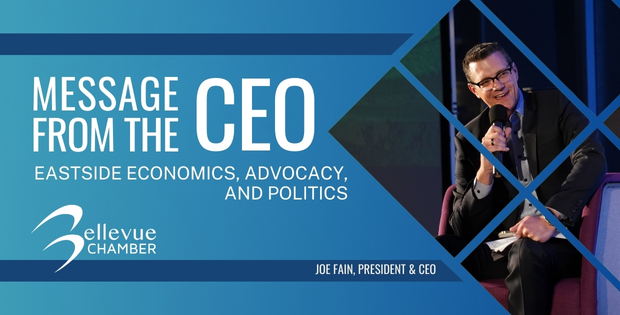Washington’s new budget? Already in the red.

The very first revenue forecast of the 2025–27 biennium shows Washington’s budget deep in the red, by close to half a billion dollars. It is highly unusual for a newly enacted budget to fall out of balance by this magnitude in its very first forecast.
Despite actual cash receipts coming in $154.1 million above forecast from June to September, the outlook still weakened due to slower job growth, housing permits, and construction activity.
Under the forecast’s “pessimistic” scenario, receipts could fall $3.36 billion below baseline for 2025–27.
The Economy
The state economist's report pointed to some dire statistics that should concern any budget writer.
- Washington ranked last among all states for personal income growth in Q1 2025 at just 3.2%. Net earnings rose only 0.1% versus 5.0% nationally.
- Washington sees just 0.3% growth this year and 0.2% in 2026, with unemployment peaking at 4.9% in 2027.
- State economists revised the housing construction outlook down sharply, with 2026 permits projected at -8.2% before rebounding.
- Seattle-area CPI is up 2.8% year-over-year, but home prices have declined for five straight months.
Why This Matters
Back in session, business groups and some legislators warned that a razor-thin $2 million ending balance was not sustainable. This forecast proves the point. If downside risks materialize — tariffs, federal funding shifts, high interest rates, global instability — the state could face multi-billion-dollar shortfalls coming on the heels of largest tax increase in state history.
What Could Come Next
- Across-the-board cuts: If the Governor projects a deficit, state law requires uniform reductions across the board without Legislative intervention. The Governor can’t pick and choose where to find savings.
- Special session: The Governor or 2/3 of Legislature can call themselves back into session to address the budget shortfall more intentionally.
- Temporary deficit: OFM can authorize a temporary general fund deficit, but this too would alarm credit markets.
What Should Come Next
The Governor should call a special session to target reductions and protect essential services. The sooner this is done the more savings can be captured. The state must stop the bleeding quickly.
Budget writers should use conservative job, housing, and revenue assumptions, stress-testing against the pessimistic case. Optimistic expectations and unrealistic assumptions that don’t pan out will further jeopardize essential services.
State officials must guard our reserves. Burning rainy-day funds or propping up state programs with one-time funds will create more pain long-term.
Recognize that the pain may very well be yet to come. Washington is below the national average in workforce participation, below the national average in rising unemployment and job openings, and ranks 48th in Forbes list of best states to start a business. We have the 8th highest business failure rate and have dropped from 4th to 45th in business tax competitiveness since 2014.
These are frightening statistics that don’t get a lot of play in Olympia. Many Washingtonians, and some legislators among them, don’t believe the warning signs or the potential calamity they could bring about for our region. They don’t trust businesses and entrepreneurs who threaten to relocate jobs, and some among them say “good riddance.” They believe that new revenue is the only solution to the problems we face.
Washington needs discipline, transparency, and courage. The sooner lawmakers respond, the smaller — and smarter — the fixes can be.
